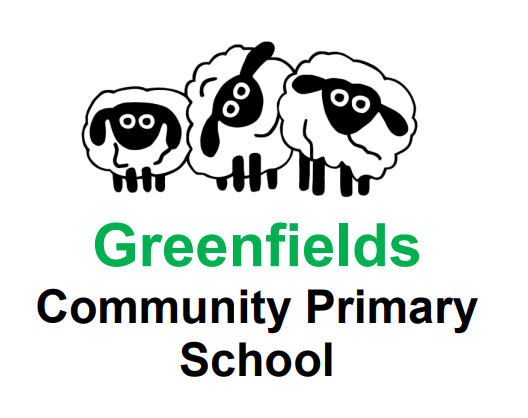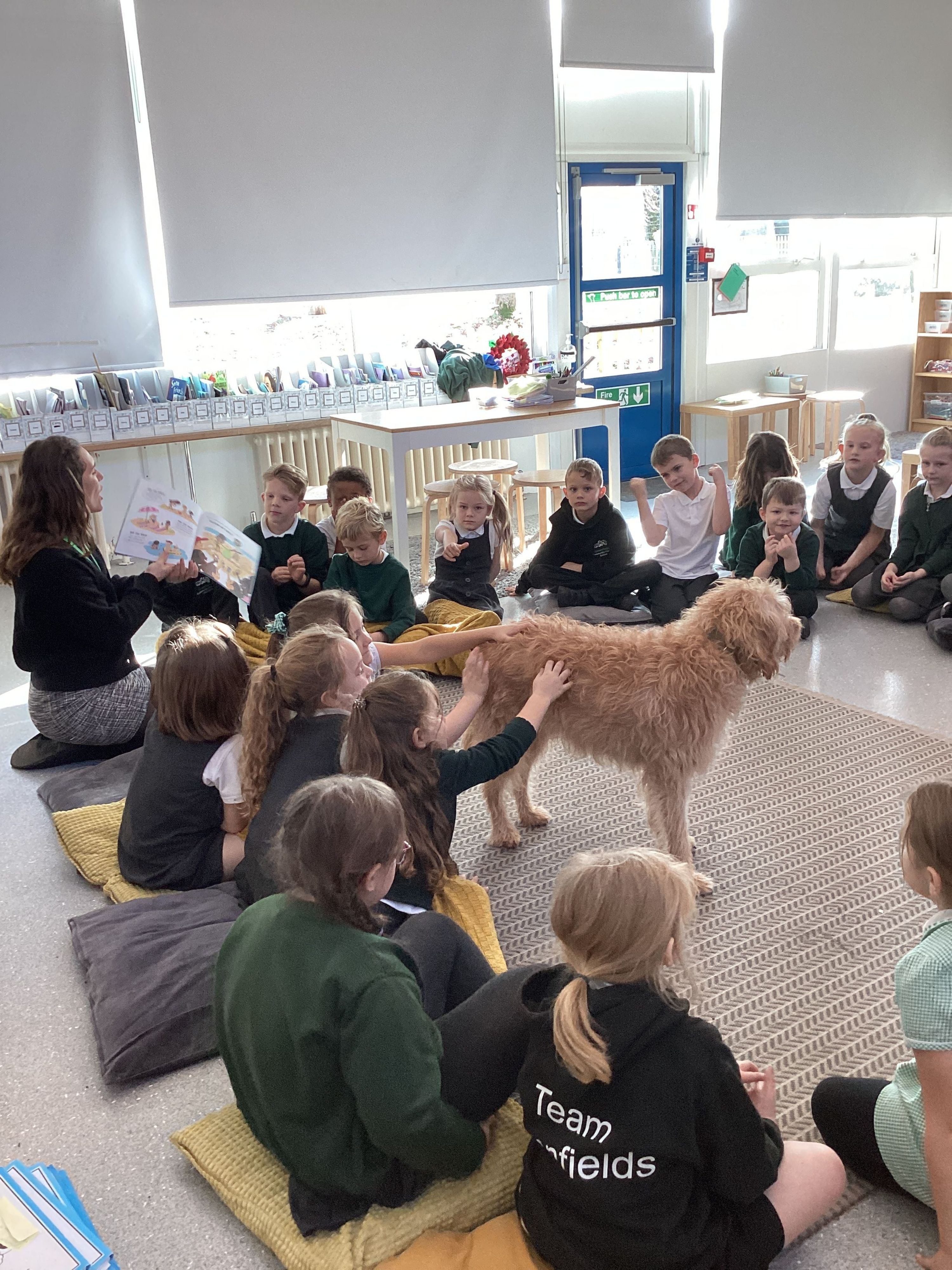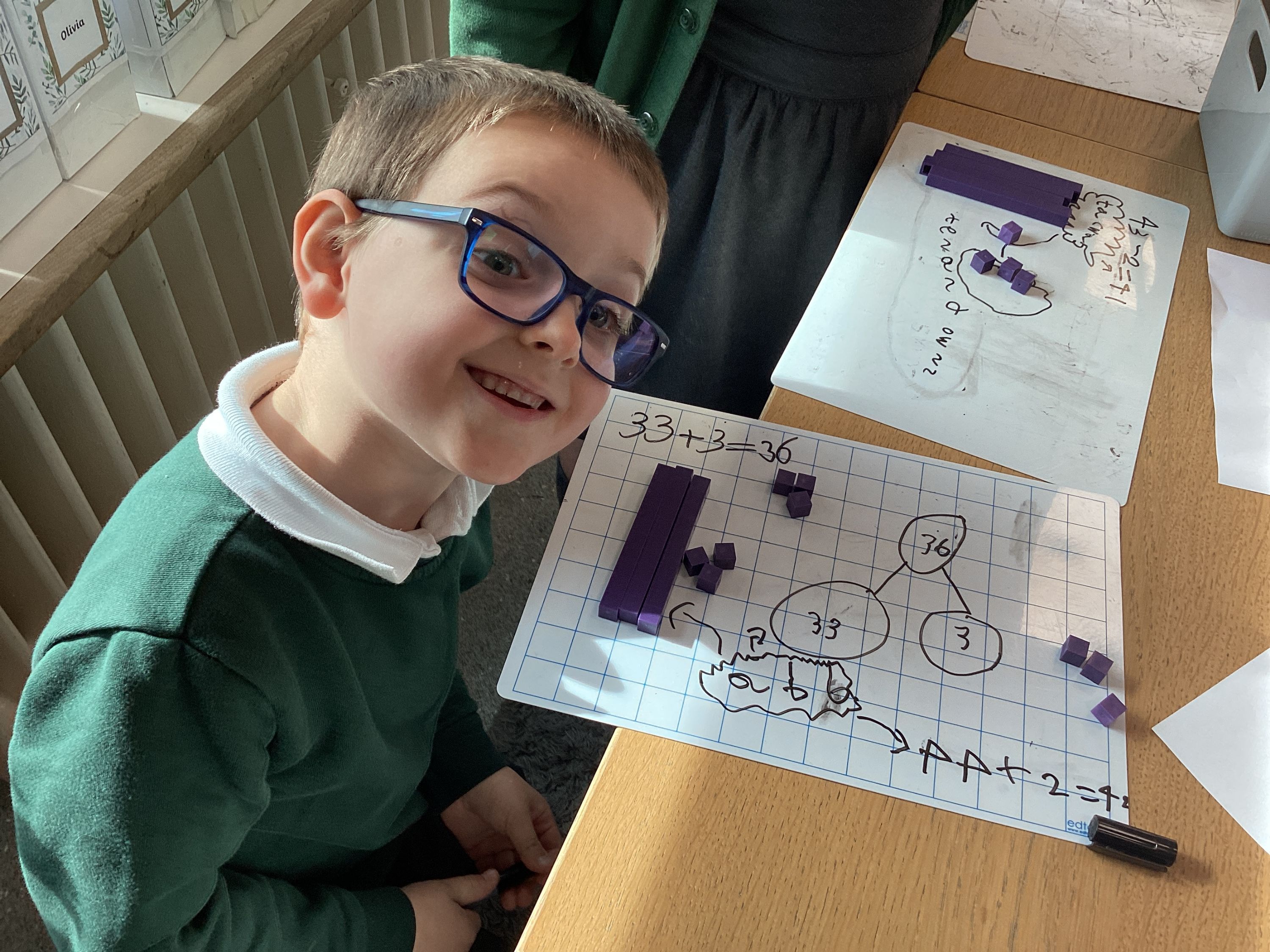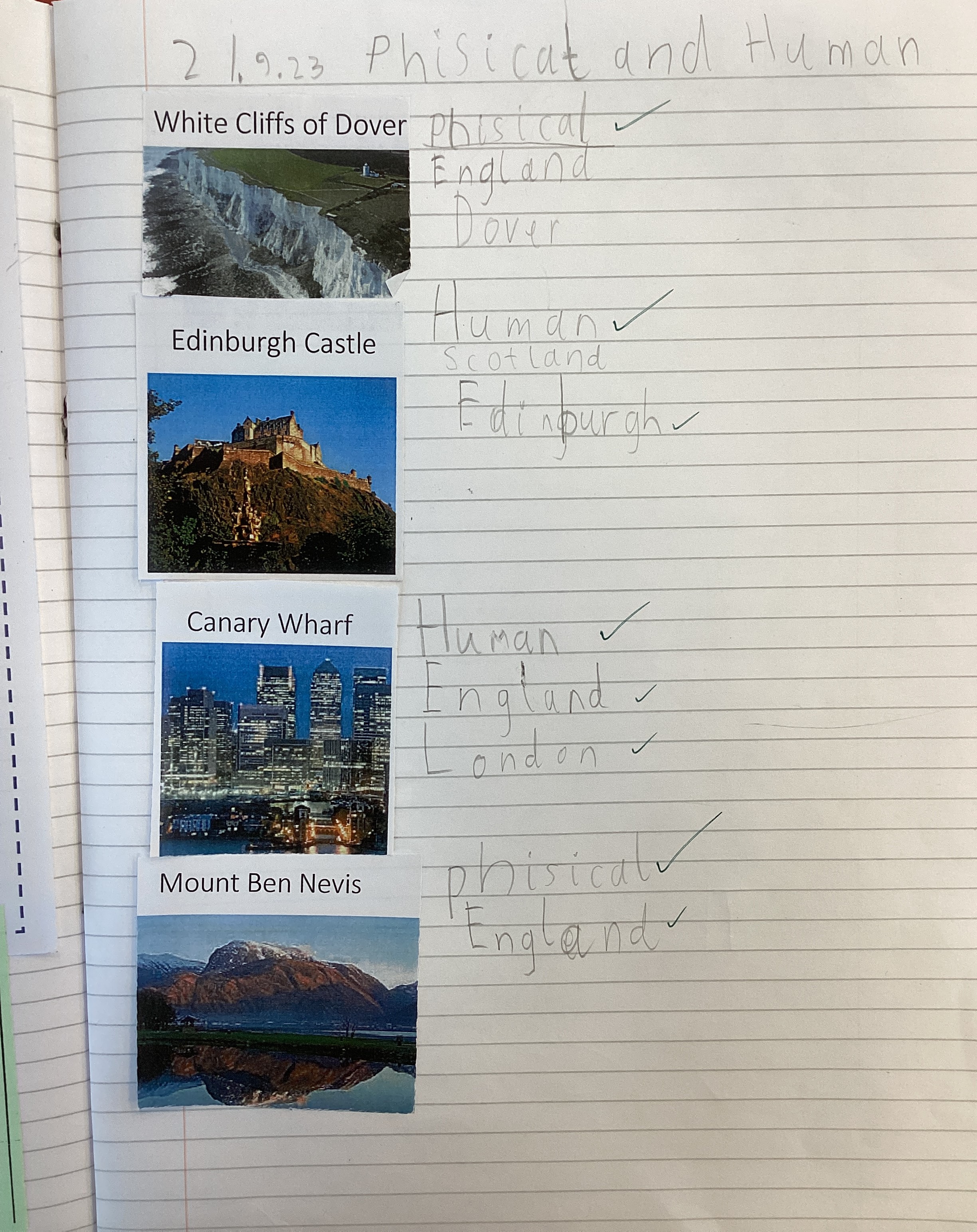2023/24
Topic 18 (Term 6)
History -The Great Fire of London
In History, we will kickstart our learning with a Great Fire of London workshop, where we will travel back in time to the year 1666. We will look at artefacts, significant historical figures and features of a Tudor house. We will continue our learning by comparing past and present London and how it has developed and changed since the 17th Century.
Our workshop day!

We looked at a variety of artefacts from the Great Fire of London. We thought like historians to discuss what we thought it was, how it was used, who would have used it and what it tells us about the 17th Century.




Topic 17 (Term 5)
PSHE - Friendships (Discrete week)
During our PSHE week we will talk about what makes a good friend, looking at qualities we look for in others and within ourselves. We will talk about kindness, respect and how to deal with conflict.
We began with a 'kindness' activity, leaving anonymous messages around the room for people in our class. We noticed that it made us feel good to receive a kind comment but also to give out kindess. We looked at how we can use this in practice and experiences where we have received/given out kindness.
Finally, we looked at dealing with conflict and emotions in a friendship. We learnt about respecting ourselves and others when we have a disagreement. We also learnt that it's okay to not always agree with our friends and how to communicate difficult feelings to them in a respectful way.
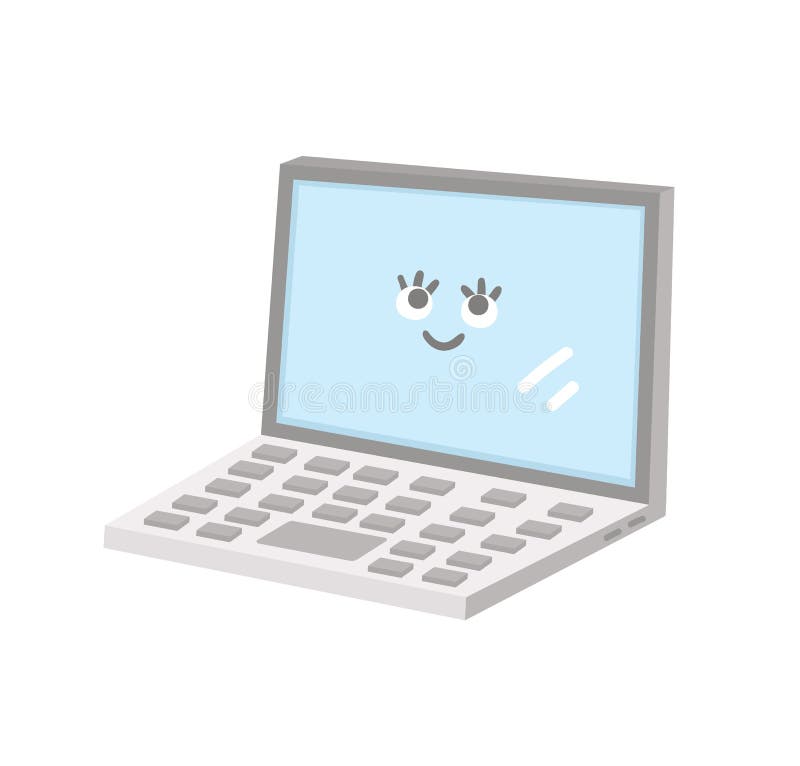
Topic 16 (Term 5)
Computing - Digital Wellbeing
In computing, we will be learning how to stay safe online. We will begin by reading an interactive book about Smartie the Penguin. We will help him make sensible and safe decisions when faced with problems online. We will then use our knowledge to complete the game 'Interland' which covers 4 different 'kingdoms' of e-safety.

Topic 15 (Term 5)
Music - Animal Antics
In music this term we will be focusing our learning on the piece 'Carnival of the animals' by French composer Camille Saint- Saens. We will begin by learning about the pitch, tempo, dynamics and 'mood' of a piece of music. We will then appraise parts of the song, describing how the composer has used these elements to represent different animals. After that, we will look at beats in the music and the musical notations that represent them (crotchet, quaver and minim). Next, we will apply this learning by composing and creating our own piece of music. Finally, we will incorporate vocals by performing the song 'Down in the Jungle' as a class.
Guess the Animal!
We listened to different parts of the music and acted out the animal we thought it represented based on it's pitch, tempo and dynamics.



We then developed our knowledge of beats further, looking at the names and symbols of each note. We practised reading simple music and clapping along to follow a beat.
We created our own short peices of music using the notes below. Check them out!

After that, we composed our own pieces of music, using the beats we created. We thought about how we wanted our song to sound and what instruments would best represent our chosen animal.
Check out our performance of 'down in the jungle!'
Topic 14 (Term 5)
Science - Plants
In Science this term, we will be learning about what plants need to survive. We will begin by conducting a scientific experiment into the needs of a plant. We will make predictions and record our findings over a period of time. Next, we will look at the life cycle of a plant, discuss each process and investigate concepts including germination, pollination and seed dispersal. We will be linking our newfound knowledge to previous learning of plant parts and exploring how they support these processes. Finally, we will conclude our learning with a local visit to Mote Park, to observe, classify and link our learning to real life experience.
We discussed the independent, dependent and control variables in our experiment and how we can make this a fair test. We made sure we kept the cup, soil, and growing time the same, only changing one need.
Our trip to Mote Park!
We went on a local visit to Mote Park to have a closer look at the surrounding plants. We used our knowledge and close observation to complete our field work, making conclusions about seed dispersal, life stage and the types of plants we could see.



Topic 13 (Term 4)
RE - Islam
In RE this term, we will be learning about the religion of Islam. We will begin by learning our 'fingertip' knowledge, finding out the 5 core themes(name of religion, followers, deity, place of worship and sacred text). Throughout this topic we will be making links to other religions we have previously learnt and relating them to our own experiences. We will cover the five pillars of Islam, features of a mosque and examinine different sources.
Topic 12 (Term 4)
D&T - Sewing
In DT this term, we will be designing, making and evaluating bookmarks. We will begin with market research, evaluating existing bookmarks, looking at features such as durability, decorations and stitch work. We will begin by practising cross stitch and running stitch techniques, evaluating the advantages and disadvantages of using these for our designs. Next we will use this knowledge to design our bookmarks and finally we will make them.

Check out our finished bookmarks!

Topic 11 (Term 4)
History - Dinosaurs
In History this term, we will explore the world of palaeontology, learning about historical figures such as Mary Anning. We will begin by identifying different features of dinosaurs and their adaptations throughout evolution. Next we will think like Historians, classifying dinosaurs and examining evidence. We explore the three main time periods of the Jurassic Age on a timeline and learnt about the importance of palaeontology and fossil types. Finally, we will conclude our learning with a trip to Wingham Wildlife Park.
Dinosaur break in!
Oak Tree class had a 'Dinosaur break in' over the weekend! We examined the evidence left behind and made conclusions about the type of dinosaur it could be, its size, features and diet. We found bones, grass, footprints, eggs and even poo!
Check out our Jurassic Age timeline. We sorted dinosaurs into the correct time period and represented our learning through drawing and labelling.



We had a fantastic time at Wingham Wildlife Park. We enjoyed a dinosaur workshop, saw different animals and had fun being palaeontologists in the dinosaur area.
Term 3 fun!
As a reward for winning 3 gold attendance medals, Oak Trees had a film afternoon with popcorn, juice and biscuits!
Topic 10 (Term 3)
PSHE - Diversity and Acceptance
To begin our topic, we created self -portraits using our ipad cameras to accurately draw ourselves. We discussed our differences and what makes us unique. Throughout the week we annotated these to show what represent us. Next, we challenged gender stereotypes. We were asked to sort jobs into 'girls' 'boys' and 'both'. We learnt that any gender can do any job and children can play with any toys regardless of gender. After that, we looked at family types and discussed how family can be different to each individual. After reading 'We Are Family' we found noticed that every family type was different but they all had one thing in common. They shared love for one another. Finally, we finished by looking at visible and invisible disabilities. We learnt about successful disabled celebrities and children, played boccia and learnt how to sign our names in BSL.
Check out our BSL!

Topic 9 (Term 3)
Science - Animals and Humans
In Science this term, we will be learning about animals, including humans. We will begin by looking at various lifecycles and comparing them. Next, we will look at the offspring of different animals and investigate what living things need to survive. Finally we will finish by conucting a scientific experiment into the important of hygiene.
We investigated the effects of germs on pieces of bread. We discussed how to keep this a fair test and made predictions about what we thought would happen. We touched the bread with dirty hands, washed hands (soap and water), wiped on an ipad, washed hands (water only) and untouched bread.
The results were disgusting! Check them out below.

Topic 8 (Term 3)
Weather - Geography
In Geography this term, we will be looking at weather and climate. We will start by discussing the four seasons in the UK and across the world, looking at weather patterns and key features of each. Next we will look at the different climate zones, finding out what is meant by a temperate, polar, tropical, arid and mediterranean climate. Finally, we will look at weather patterns and climate change.
We worked in small groups, using the weather app on our iPads, to gather weather information. We discussed what is meant by precipitation, wind speed and temperature.
Check out our weather forecasts below!


Topic 7 (Term 3)
Communication - History
In History, we will be looking at how communication has changed over time. We will begin by exploring key developments on a timeline, focusing on early forms of communication. Throughout this topic we will discuss key inventions and compare significant people who have influenced the development of communication.
We learnt about the role of the printing press and its impact on Britain today. We looked at a variety of printing sources, discussing how historians look for clues to draw conclusions about a piece of evidence.

"I think this is a new source because it has colour and electric lights which weren't around in the past" - Freddie.
Term 3 Maths
We started the term by looking at shape. We explored different properties and sorted 2D and 3D shapes into groups. We also created repeated and symmetrical patterns.
Next we explored money. We identified coins and notes, made different amounts and found change.


Term 2 fun!
After studying the text 'Albert Upside Down', we enjoyed making fan Art to celebrate our learning. Award-winning author Ian Brown, enjoyed our tweet so much - we made it onto the 'Albert Tortoise' website!
Check us out by clicking the link below!
12 days of Christmas!
We enjoyed lots of Christmas fun! We played 'dress the snowman', drank hot chocolate and even met Father Christmas!


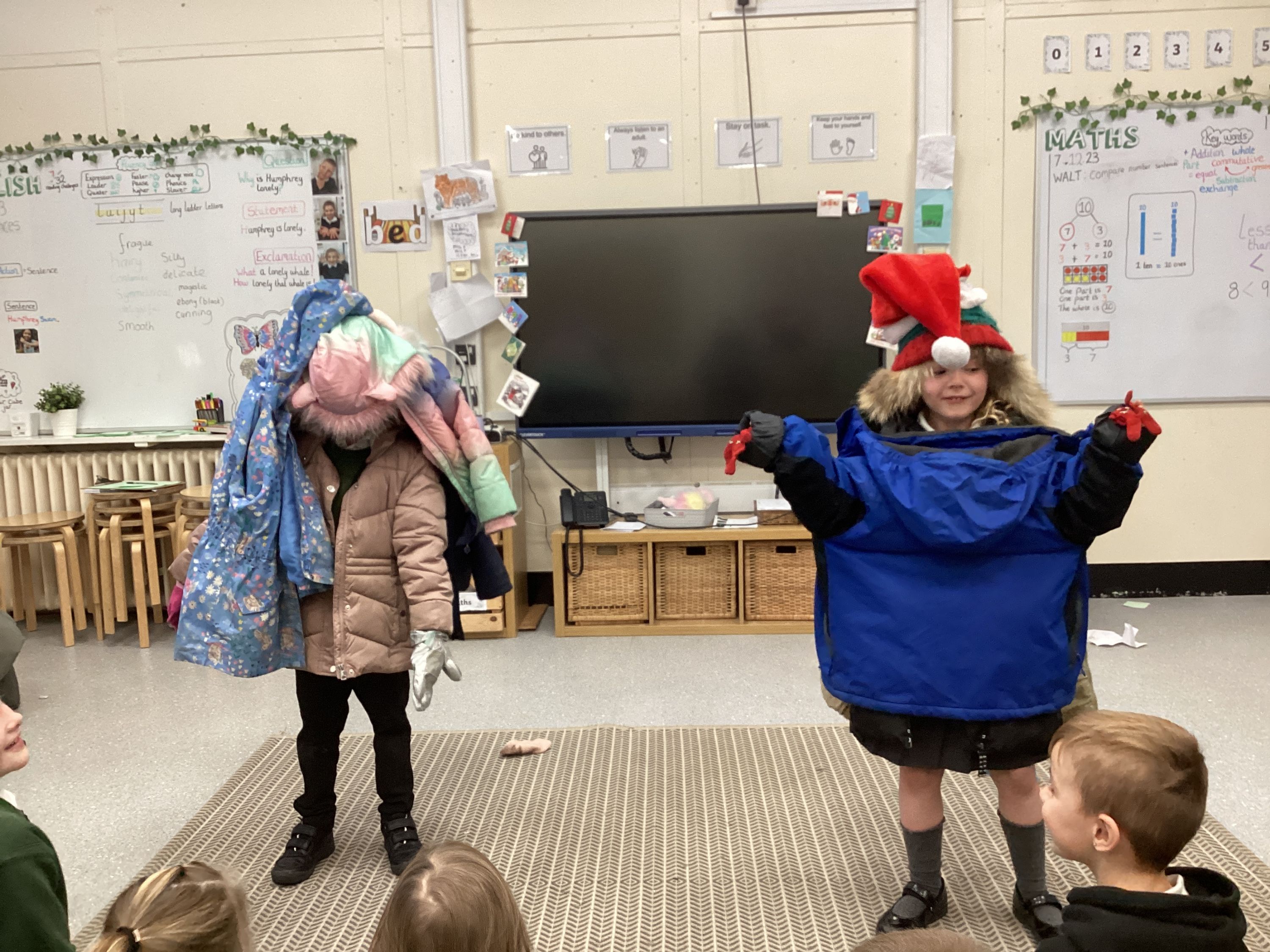

KS1 were very excited to have award-winning poet Joshua Seigal visit Greenfields. Josh performed some of his favourite poems to us. It was brilliant!

We looked at Joshua Seigal poetry in class. Some of us performed as part of our fluency lesson.
We had a very special visitor join us for a story during book club this week.
After a good week of attendance, Oak Trees had an opportunity to roll the dice on the 'classopoly board'. Our treat was a play session in the nursery garden. We had so much fun!



Topic 6 (Term 2)
Scratch Coding - Computing
In computing this term, we will be using software (Scratch Jnr) to develop our programming skills. We will begin by creating our own algorithms to instruct our sprites to move. Next we will practise how to programme a sprite to receive and send messages. After that, we will learn how to debug a code and practise correcting incorrect algorithms. Finally, we will create our own quizzes, applying the skills we have learnt.
We created an algorithm to make our sprite move.




Topic 5 (Term2)
Amazing Abstract - Art
During this topic, we will be creating our own piece of abstract art. We will begin by exploring primary and secondary colours and looking at artists that use these in their work. Next, we will explore different painting techniques and discuss the effectiveness of each. After that, we will explore how Art makes us feel. Thinking about the emotions that it might provoke. Then, we will look at traditional and non-traditional shapes in real life and existing art. Finally, we will use all of our knowledge to create a final piece of abstract art.


Final pieces
Topic 4 (Term 2)
Shake it off! - Music
In music this term we will be looking at two inspirational artists (Taylor Swift and Lewis Capaldi). We will begin by appraising and evaluating songs of theirs and comparing them. Next, we will listen to beats within each song and create our own short piece of music. Finally, we will plan and perform the song Shake it off, using instruments to count each beat.
We began by evaluating the song 'someone you loved' by Lewis Capaldi and 'Shake it off' by Taylor Swift. We worked in groups to listen to the instruments and vocals in both and discussed how it made us feel. We learnt about tempo, pitch and the dynamics of music and used this knowledge to appraise both songs. 
After that, we learnt about beats in music. We worked in small groups to create our own piece of music, clapping in time to each beat.
Finally, we planned and performed the song 'Shake It Off' in small groups. We thought carefully about our choice of instruments and tried to keep in time to the beat of the song (spider, dog, dog, dog).
Check us out below!
Term 1 fun!
Reading in our outside classroom.

Teacher and pupil swap for Macmillan Coffee Afternoon.


Topic 3 (Term 1)
Judaism - RE
In RE this term we will be exploring Judaism. We will begin our learning by visiting a local Synagogue to investigate what Judaism means to different Jewish people and their community. Next, we will explore symbolism throughout the Jewish faith and compare different sources. Finally, we will celebrate all of our learning with a Judaism workshop, finishing with our own Shabbat.
Our Trip to Chatham Synagogue
To kickstart our learning, we visited our local Synagogue to find out what Judaism means to the Jewish community. We had the chance to wear kippers and prayer shauls and looked at some Jewish artefacts. Dahlia discussed how Jewish people celebrate shabbatt and we tried some delicious challah bread!




We learnt our 'fingertip' knowledge, to explore the five key features of Judaism. We linked this back to our previous learning in year one, to compare it to Christianity.

After that, we worked in small groups to look at different Jewish sources. We spoke about what we thought each quote or picture meant and what it shows about the Jewish faith. We then compared all of our notes and discussed any key themes or concepts.
After that, we looked at different Jewish children. We discussed the similarities and differences between them and what Judaism looks like in their communities. We also notice commonalities between the children and ourselves.

Our Jewish workshop
To celebrate our learning, we finished our topic with Judaism day. We learnt about different Jewish stories from the Torah, the festival of Purim and baked some delicious challah bread! Finally, we finished with a shabbatt in the school hall.

Topic 2 (Term 1)
Living Things And Their Habitats - Science
In Science, we will be exploring and discussing various habitats and ecosystems around the world. We will begin by observing the habitats and microhabitats in our local area and school. Next, we will learn what makes something alive by classifying images into alive, never alive and dead. After that, we will explore habitats and living things around the world, discussing their dependence on each other. Then, we will look at food chains, learning which living things are classified as producers, predators and prey. Finally, we will showcase all of our learning by creating a habitat of our own.
Microhabitats.
We took our learning outside to explore our grassland habitat. We discussed what living things we might find and why it might be a suitable habitat. We took our magnifying glasses and petri dishes to observe each creature and recorded the microhabitat we found them in. We spotted slugs, snails, wasps, caterpillars (many) spiders and even a chrysalis.


Living, Dead or Alive?
Today, we discussed what makes something alive. We learnt that all living things have 7 characteristics; movement, respiration, sensitivity, growth, reproduction, excretion and nutrition. We used this knowledge to classify different images into alive, dead and never alive.


Next, we looked at living things around the world and their habitats. We learnt that living things need food, water, shelter and space to survive well in a habitat. We discussed how they depend on each other and how animals have adapted to their environment over time.
Our creations
Finally, we showcased our learning by creating our own habitats. We thought carefully about which living things would survive best and provided them with the things they needed. Some of us thought about which producers, predators and prey we might find.
Check them out below!






Term 1 Maths
In Maths this term, we have been learning all about place value. We began by recognising and representing numbers to 100 in different ways.





We practised partitioning whole numbers into tens and ones and then into flexible parts.





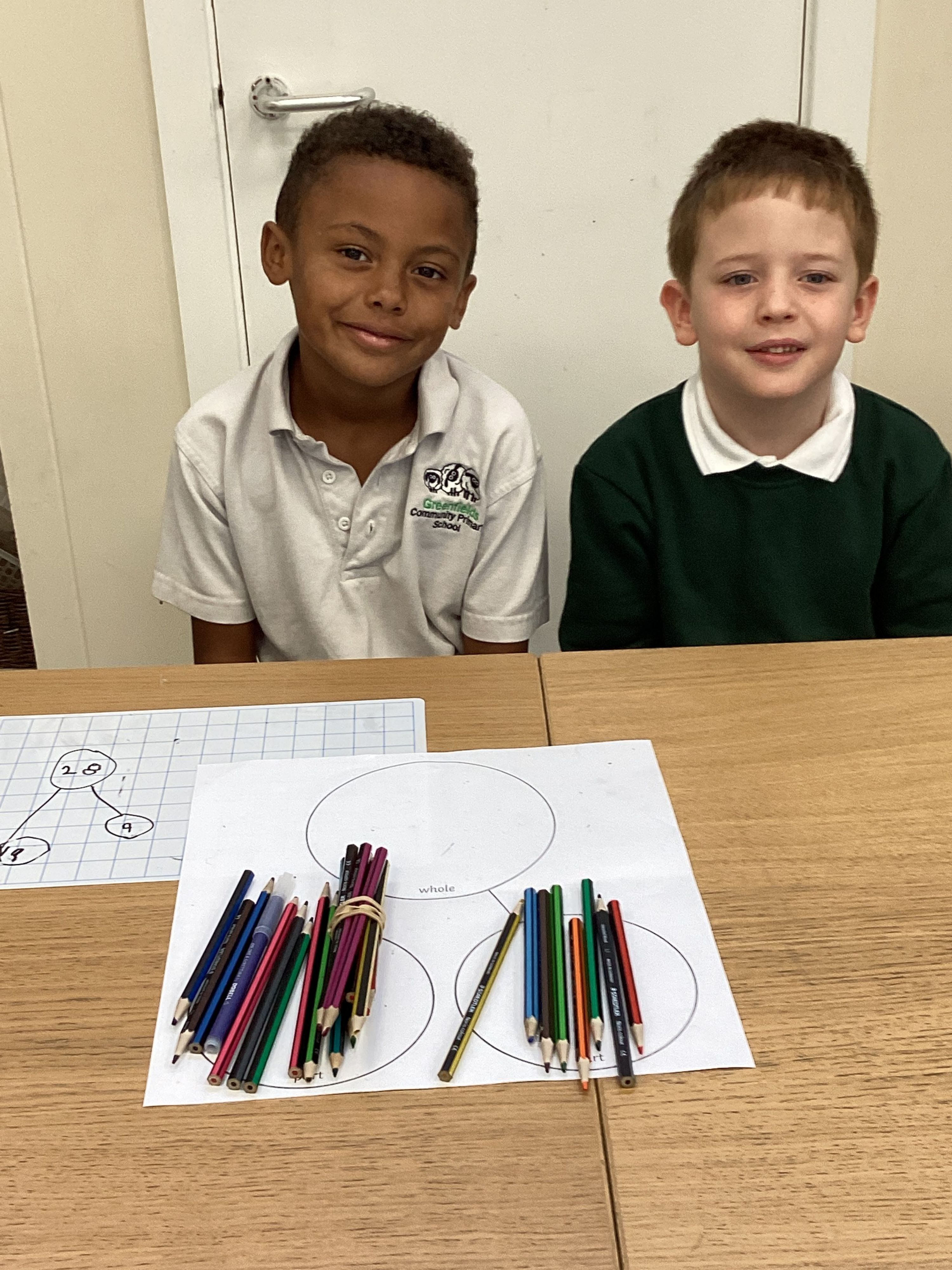

Then, we estimated the placement of numbers on different number lines. We even practised 'jumping' in intervals on our classroom floor.







Finally, we finished the term by looking at addition and subtraction. We explored the number bonds to 10, 20 and 100 and discussed the relationships between these. We also showed the commutative law for each.



Adding two-digit by one- digit numbers practically.



Topic 1 (Term 1)
Our Amazing World - Geography
To kick-start our first topic of the year, we will be learning all about the world around us. We will begin by identifying the different continents and oceans and where they are on the globe. Next, we will learn about each continent in detail, discussing the countries, climates and features of each. We will then zoom in closer, comparing our local area with a non-European city, looking at the human and physical features of both.
We worked in pairs to identify where the seven continents and five oceans are on the world map.




Check out our performance of the 'continent song'.
Today, we worked in groups to match facts and photos to the correct continent. We used our knowledge of climates, countries, landmarks and geographical features to decide which continent it belongs to.



Next, we zoomed in closer on our world map to look at different countries. We used Google Maps, atlases and globes to pinpoint where they are in the world. We discussed climate, looking at its locality to the equator and what landmarks/ features we might find. We learnt that our country England, is in the continent of Europe and has a temperate climate.






Then, we 'explored' the physical and human features of the United Kingdom and discussed the four constituent countries it is made up of. We used atlases to identify each country and its capital city.
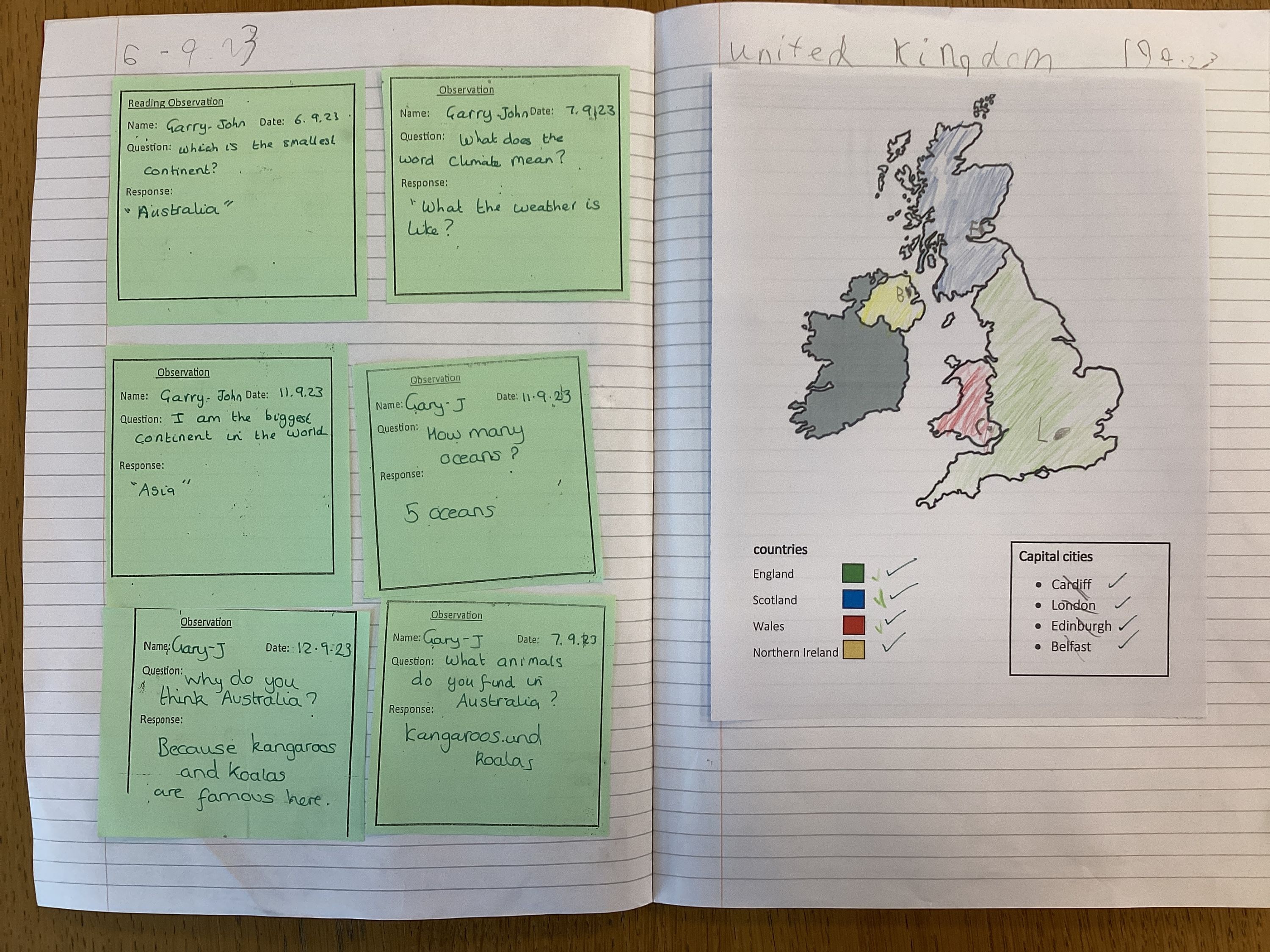



Finally, we learnt about the Non-European country of India. We discussed climate, food, location and cultural features. We compared this with the United Kingdom and presented our learning as a fact file.


